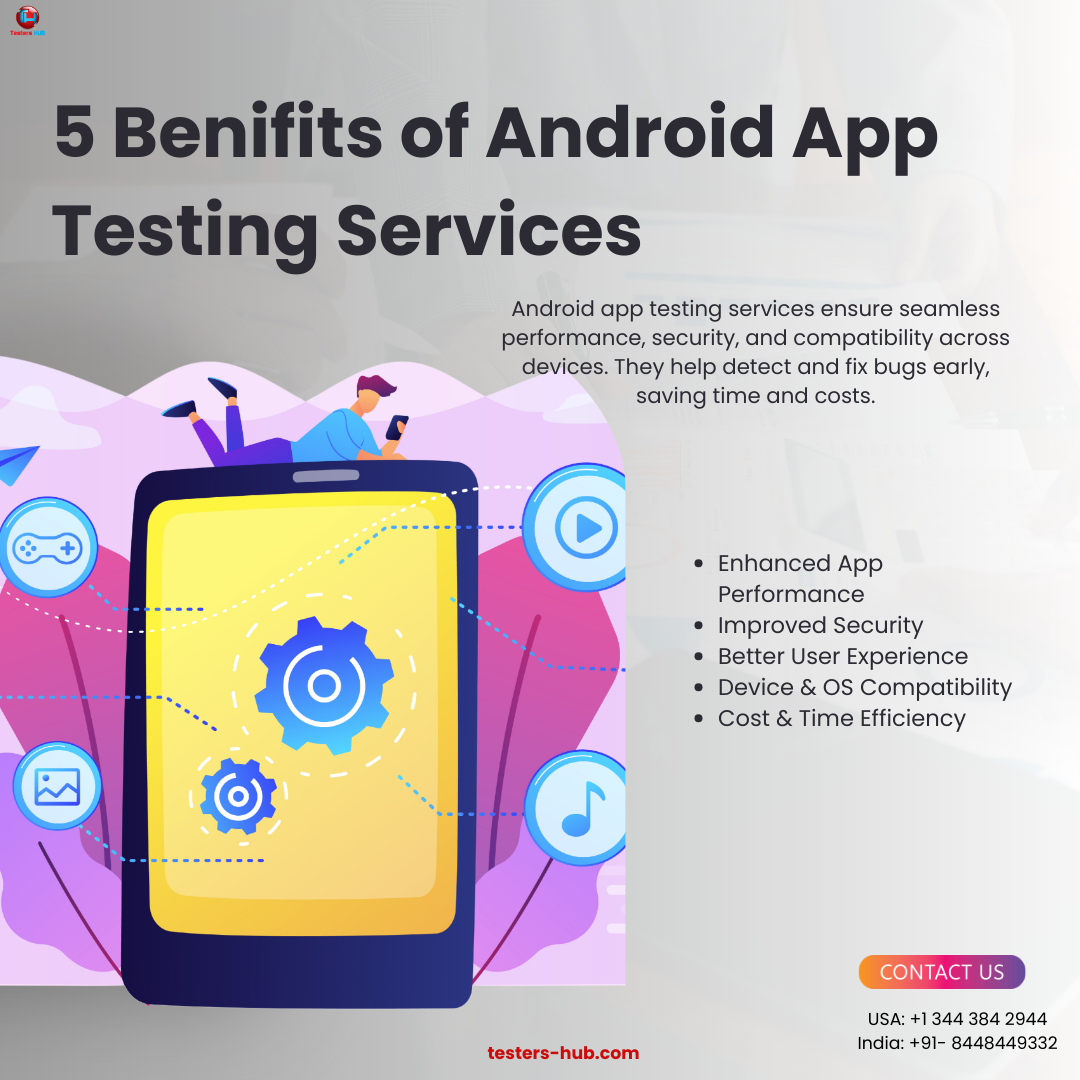Functional and Usability Mobile App Testing Services for Cross-Platform Apps

As mobile app usage grows, maintaining a consistent user experience across several platforms has become critical. Functional and usability testing are critical in establishing an app's success, especially when it must perform seamlessly across many platforms such as iOS and Android. This blog delves into the Functional and Usability Mobile App Testing Services for Cross-Platform Apps, the special issues that arise when designing cross-platform apps, and effective methods for ensuring a high-quality user experience.
Understand Functional Testing
Functional testing guarantees that every functionality in the program works as expected. This process entails testing the app's user interface (UI), APIs, and databases to ensure that each feature works properly. Functional testing, which mimics real-world user interactions, aids in identifying issues in navigation, data management, and other essential app Functionalities
Key methodologies:
Unit testing ensures that individual functions work as expected.
Integration testing verifies the interaction of modules.
System testing involves evaluating the program as a whole to ensure that all components perform properly.
The Role of Usability Testing
Usability testing determines how intuitive and user-friendly an application is. A great app is more than just functional; it should be simple to use and provide a pleasant user experience. This form of testing aids in identifying pain points, such as ambiguous navigation or slow reaction times, which may frustrate users and lead to app abandonment.
Importance of User Experience: A user-friendly app can dramatically improve retention and client happiness. It ensures that consumers can do their tasks without becoming confused or frustrated.
Cross-Platform Challenges
Cross-platform apps face specific testing challenges, primarily because they need to perform consistently on various operating systems, devices, and screen sizes. Functional bugs and inconsistent user experiences can arise when the app’s behavior differs between platforms. Cross-platform testing must account for these variations to ensure a seamless experience across all devices.
Challenges Include:
Inconsistent UI elements across platforms
Device-specific bugs
Performance issues on certain platforms
User-Centric Design: Enhancing Usability
Usability testing is essential for improving user-centered design. Observing how real users engage with the app allows testers to find areas for improvement, such as unclear features or complex workflows. This data-driven method enables developers to make design improvements that are consistent with consumer expectations, so increasing overall satisfaction.
Testing Tools for Cross-Platform Applications
Several tools can simplify functional and usability testing for cross-platform apps:
Appium enables automated testing for iOS and Android platforms.
Selenium is useful for testing web-based applications across several browsers.
TestComplete: Allows for functional UI testing across several devices.
UserTesting: A platform for collecting real-time user feedback.
Creating Test Cases for Functional Testing
Effective functional testing requires well-written test cases. These should cover all possible user interactions, including both common and edge cases. Clear test cases help ensure that every part of the app is thoroughly tested, reducing the risk of bugs slipping through.
Guidelines for Effective Test Cases:
Focus on core functionalities.
Cover both positive and negative scenarios.
Prioritize high-risk areas.
Engaging Users in Usability Testing
Involving users in the testing process is essential for gathering authentic feedback on the app’s design and functionality. Using techniques such as beta testing or moderated usability testing, developers can see firsthand how real users navigate the app.
Strategies for Involvement:
Recruit users from your target demographic.
Offer incentives for participation.
Observe users’ interactions to identify usability pain points.
Analyzing User Feedback
Once usability testing is complete, it’s crucial to interpret the feedback carefully. Look for recurring issues or suggestions to prioritize improvements. Organize feedback into categories (e.g., navigation, design, performance) to streamline the process and ensure all concerns are addressed.
Iterative Testing Approach
Continuous testing throughout the development process guarantees that functional and usability issues are identified early and rectified prior to launch. An iterative method enables regular modifications based on testing feedback, resulting in a more polished and stable product.
Real-Life Success Stories
Several successful cross-platform apps benefited from rigorous functional and usability testing:
WhatsApp is known for its minimalistic design and consistent operation across platforms.
Slack: Extensive usability testing maintained a consistent user experience, which fueled global adoption.
Conclusion
Combining functional and usability testing is critical for cross-platform programs to ensure high-quality results. Businesses may design apps that perform properly while also providing an exceptional user experience by addressing both technical and user-centric concerns.
Note: IndiBlogHub features both user-submitted and editorial content. We do not verify third-party contributions. Read our Disclaimer and Privacy Policyfor details.







